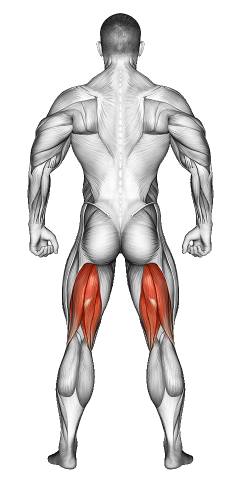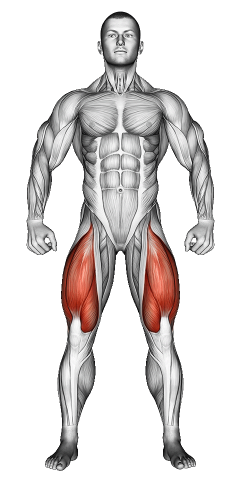Sumo Deadlift: Video Tutorial & Exercise Guide

Written By: Claude Michael
Updated: Oct 13, 2024
| Workout | Sumo Deadlift |
| Primary Muscle Group | Hamstrings |
| Secondary Muscle Group | Calves, Quads |
| Equipment Required | Barbell |
| Force Type | Hinge |
| Mechanics | Isolation |
| Exercise Type | Strength |
| Difficulty | Intermediate |
Sumo Deadlift: Video Tutorial & Exercise Guide
- 1.Sumo Deadlift: Muscle Groups
- -1.1Primary Muscle Group
- -1.2Secondary Muscle Group
- 2.Sumo Deadlift: Step-by-Step Guide
- 3.Sumo Deadlift: Overview
- 4.Sumo Deadlift: Benefits
- 5.Sumo Deadlift: Pro Tips & Advanced Techniques
- 6.Sumo Deadlift: Progression Plan
- 7.Sumo Deadlift: Frequently Asked Questions (FAQs)
Sumo Deadlift: Step-by-Step Guide
- Step 1: Stand with your feet wider than shoulder-width apart, toes slightly pointed outward. Your stance should resemble a sumo wrestler’s.
- Step 2: Bend at your hips and knees to lower your body toward the barbell. Grip the bar with both hands inside your knees, using an overhand or mixed grip.
- Step 3: Keep your chest up, core braced, and shoulders pulled back as you start the lift. Your back should remain straight, not rounded.
- Step 4: Push through your heels and drive your hips forward, lifting the bar off the ground while keeping it close to your shins.
- Step 5: As you stand tall, fully extend your hips and squeeze your glutes at the top of the movement.
- Step 6: Lower the barbell back to the floor in a controlled manner by hinging at the hips and bending your knees.
Sumo Deadlift: Overview
The Sumo Deadlift is a variation of the conventional deadlift that uses a wider stance and a more vertical torso position. This shift in mechanics places more emphasis on the quads, hips, and glutes while reducing strain on the lower back. It’s an excellent option for people with limited hip mobility or those who want to target their lower body muscles differently.
Sumo Deadlift: Benefits
The Sumo Deadlift is perfect for strengthening the entire posterior chain—especially the glutes, hamstrings, and lower back. Its wider stance helps improve hip mobility and reduces the range of motion, making it a safer alternative for people with lower back issues. It’s also a great way to develop stronger hips and quads, as the stance emphasizes these muscles more than a conventional deadlift.
Sumo Deadlift: Pro Tips & Advanced Techniques
To maximize the benefits of the Sumo Deadlift, make sure your knees are tracking over your toes throughout the movement. Keep the barbell close to your body and avoid rounding your lower back. As you progress, try using a mixed grip (one hand overhand, one hand underhand) to maintain a strong hold on heavier weights. You can also slow down the lowering phase to increase time under tension and build more strength.
Sumo Deadlift: Progression Plan
Beginner
Intermediate
Advanced
Sumo Deadlift: Frequently Asked Questions (FAQs)
What muscles does the Sumo Deadlift target?
+The Sumo Deadlift primarily targets the glutes, hamstrings, quads, and lower back. It also engages the core and upper back to a lesser extent.
How is the Sumo Deadlift different from the conventional deadlift?
+The Sumo Deadlift uses a wider stance and a more vertical torso, which shifts more emphasis onto the hips and quads, while the conventional deadlift places more strain on the lower back and hamstrings.
How often should I include Sumo Deadlifts in my workout routine?
+Include Sumo Deadlifts 1-2 times per week in your lower body or posterior chain workouts for balanced strength development.
What common mistakes should I avoid when doing Sumo Deadlifts?
+Avoid rounding your lower back and letting your knees collapse inward. Focus on keeping your core tight, back straight, and knees tracking over your toes.
Share
Don’t Wish for It, Work for It – Join the FlexXP Newsletter Today!
Thank you for signing up for the FlexXP Newsletter!
This site is protected and the Google Privacy Policy and Terms of Service apply.


